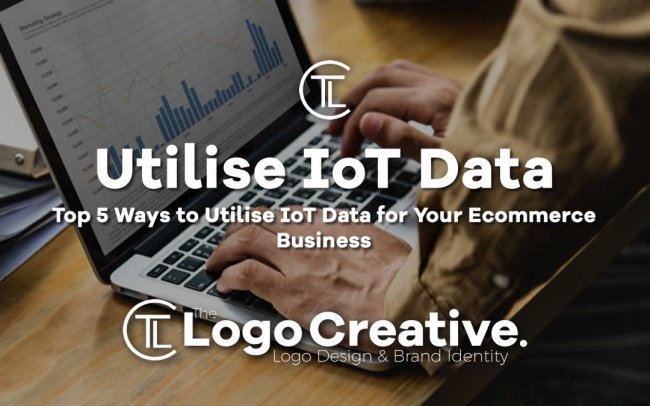The eCommerce industry is transforming dynamically every year and it is crucial for your business to analyse emerging eCommerce trends and the way consumers shop to plan and experiment with your strategy.
The Internet of Things is the latest technological trend shaping the future of eCommerce and is said to be worth $1.7 trillion by 2020. It is occurring everywhere we look, enabling devices to exchange data with each other through the Internet. Internet of Things makes it easier for retail and eCommerce businesses to carry on their operations efficiently.
Statistics say, that by 2021, 70% of the retailers will adopt the Internet of Things to improve customer experiences worldwide and expand revenue opportunities. As most of the business is investing in that trend, as an online retailer you need to know about the future of IoT in eCommerce.
Let’s go through the ways to utilize IoT data for your eCommerce business.
Table of Contents
What’s Behind IoT?
Internet of Things (IoT) is a form of a network of distinct internet-enabled devices, software, and sensors together through the medium of the Internet so that they are connected together, and doesn’t require human-to-human or human-to-computer interaction. This network is then used to share data and exchange information between apps and users.
In the world of the Internet of Things, everything can be connected and communicate intelligently. Any network of connected devices can be a part of the IoT, for instance, your phone could communicate with the lights in your house, in order to turn them on.
Benefits of IoT
There are many ways that your business can benefit from IoT, beginning with the ability to easily grab data, analyse it and come up with a solution really fast. Here are some most important benefits that the Internet of Things has to offer.
- Monitoring the business overall with good automation and control
- Improving customer service by understanding consumers better
- Increased efficiency and time-saving
- Saving money by reducing manual task and time
- Enhancing employee productivity
- Integrating and adapting business models
- Improved decision-making process
- Generating more revenue
Overall, IoT encourages organizations worldwide to work on improvements, offering tools to save time and money in the process, as well as change their business strategies. It offers solutions in healthcare, agriculture, location services, architecture as well as home automation.
IoT Devices
There are numbers of IoT applications and devices that are providing a better quality of life, making it more comfortable. According to Statista, in 2018 there has been 23.14 billion IoT devices connected worldwide. Most popular nowadays are smart homes, serving customers with several smart appliances which can be controlled remotely via computers or smartphones. Let’s go over some top IoT devices on the market right now.
- Google Home Voice Controller
The connected voice controller from Google, besides controlling your home it also comes with Google Assistant which allows users enjoy the features such as media and news, translation, managing alarms, and timers, controlling the volume and helping you to plan your day.
- Amazon Echo Voice Controller
The connected voice controller from Amazon which can give you access to information, news and weather, play music, add things to your to-do lists, make calls and message on voice commands, wake you up and control your home.
- TrackR bravo
This coin-sized tracking device is able to locate your belongings in real time and notify you about their location, whether they are lost or misplaced. It is a great solution for anyone who has trouble with finding their wallets, keys, phones or even pets.
- Logitech Pop
POP Home Switch lets everyone in the house control smart lighting, music and many more with the push of one button. You can program each switch with up to 3 commands to add creativity throughout a smart home.
- Nest Protect
It is a smoke and CO detector, currently overtaking its competitors from the smoke alarm market. With an industrial-grade smoke sensor, automatic self-testing, it has become the first home alarm to easily hush from your phone without any extra hardware.
Ways to utilize IoT data for eCommerce business
Now you should understand what benefits and innovations can IoT bring to your daily life, so we can move on to the advantages and ways of utilising IoT data for your eCommerce business.
- Inventory Management
As every retailer know, managing the stock and doing inventory checks can be a real struggle sometimes. With the help of IoT, all data can be stored in the system without human intervention.
The entire process becomes easier and reduces human errors, stores information like product type, manufacturer’s name and expiry date, enables monitoring and tracking the number of products and allows automatic orders when items are sold out. It all helps with smooth inventory management and keeping track of it.
- Personalisation and Consumer Experience
IoT enables eCommerce businesses to decrease customer dissatisfaction and stand out in a crowded market. Many brands use IoT data to analyse what products are popular on different platforms, which allows the retailer to deliver outstanding customer experiences with high-level personalisation.
IoT helps to fully understand different groups of customers and analyse their shopping habits by the search trends and browsing history. It all leads to improving customer service overall with fast interventions as well as influence purchasing decisions with targeted advertising and personalized offers.
- Supply Chain Management
IoT ensures that the supply chain management process runs smoothly. It enables monitoring and tracking the goods from the production process stage to delivery. It also gives access to information about location, temperature and allows business to predict delivery time as well as change the route and speed up the whole process.
It definitely helps retailers to reduce errors during shipment thanks to real-time monitoring and access to all information.
- Warehouse Management
As we know now, that IoT helps to manage inventory management and make sure the warehouse is fully stocked, it also decreases the chances of over-stocking the products. Different sensors can monitor the environment, for instance, the temperature, to make sure it is right and avoid any loss in the stock. It can also send alerts if an error has been detected which results in a quick intervention and solving a problem much faster.
Amazon, for instance, uses warehouse robots to improve the effectiveness of the packing process- the robots are able to load parcels of more than 300kgs.
- Ads and Real-Time Marketing
IoT data opens many doors for marketers and it is predicted to give access to information, that helps create personalised ads. Nowadays, it works best with smart wearable devices and device apps.
IoT analyses data based on user’s behavior through the wearable device or an app and suggests the ways of advertising that would attract that user. Let’s say someone is using a smart device to track their activity at the gym. Once you have access to their performance and registered workouts, you can come up with an ad that will market the product they could be interested in.
IoT advertising gives you a chance to draw user’s attention and encourage them to visit your site, through real-time messages and ads.
IoT Drawbacks
The newest technologies certainly come along with endless benefits and open many doors for online retailers. However, there are a few concerns that are brought up by the Internet of Things.
Let’s start with privacy. All of the information is stored on the Internet and there is always a possibility of hackers breaking up to the system and stealing the data, even though the information seems to be protected.
Another drawback of the Internet of Things is over-reliance. We trust the information we receive from the system; however, it can also make mistakes. Relying only on technology can be risky and if we start depending on it, the results may be tragic if the system collapses.
Finally, the last concern that comes with the IoT is the loss of jobs. The automation of technology means less space and need for human workers. Some jobs have been completely replaced by connected devices, such as self-checkout machines at the supermarkets or even ATM’s.
Summary
With evolving technology, IoT is expected to have a huge impact on the future of eCommerce. Automation, time efficiency, and better monitoring are some of the many benefits that IoT has to offer. However, it is also crucial to be aware of the drawbacks that IoT devices can bring.
As more things are connected to each other, often have no security capabilities at all. Most of the automated robots and machines are controlled from the distance and are very sensitive for data loss and sabotage. As a big organisation, you should definitely carefully protect the information and test the equipment before the complete implementation of IoT for your eCommerce business.
 Author Bio
Author Bio
Karolina is a content writer for Appnova, a creative eCommerce agency based in London that specialises in luxury brands. She loves to write content based on current e-commerce, social media, and marketing trends and provide insight in the fields of customer care as well as fashion and beauty sector.


